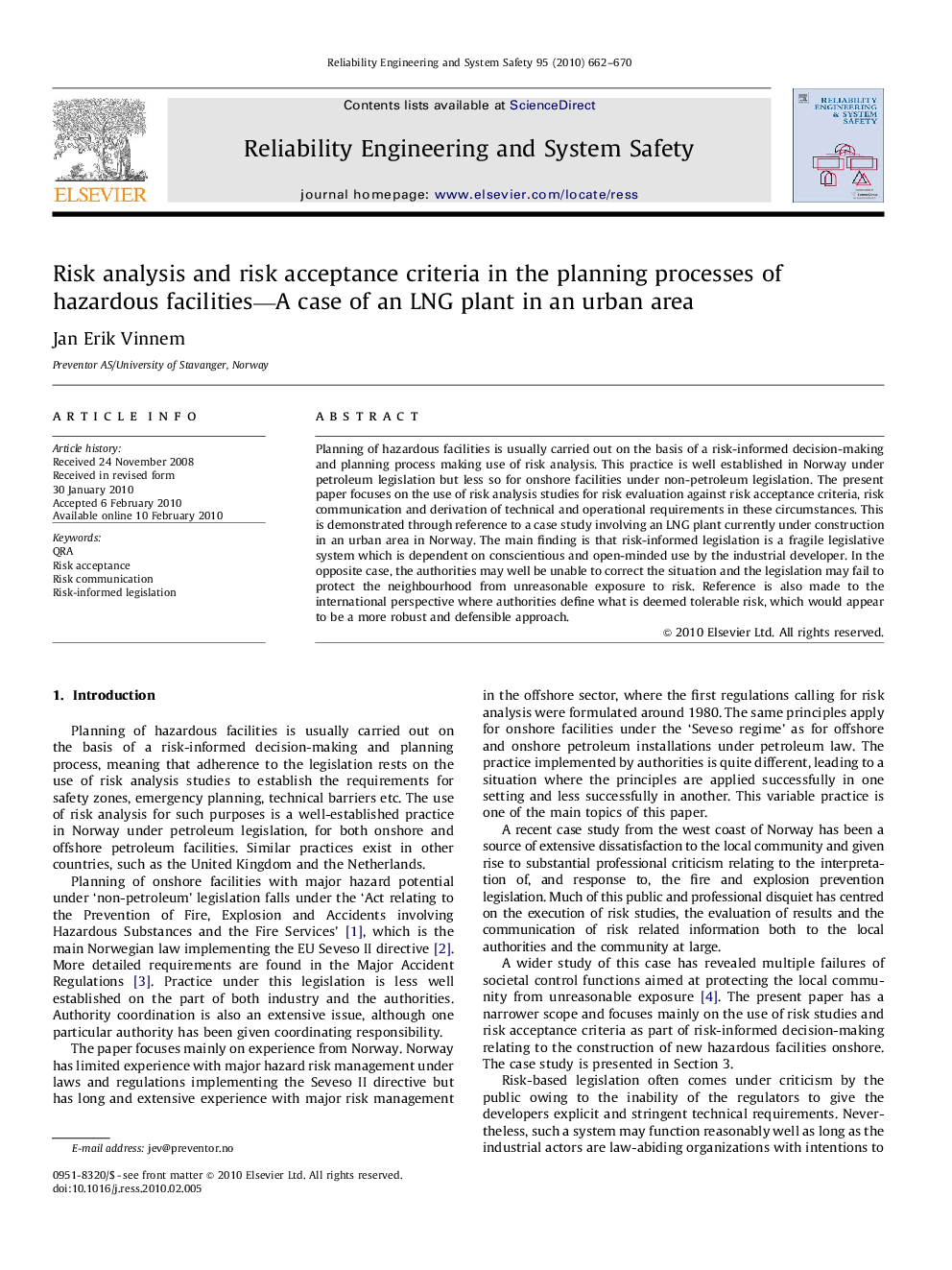| Article ID | Journal | Published Year | Pages | File Type |
|---|---|---|---|---|
| 806481 | Reliability Engineering & System Safety | 2010 | 9 Pages |
Planning of hazardous facilities is usually carried out on the basis of a risk-informed decision-making and planning process making use of risk analysis. This practice is well established in Norway under petroleum legislation but less so for onshore facilities under non-petroleum legislation. The present paper focuses on the use of risk analysis studies for risk evaluation against risk acceptance criteria, risk communication and derivation of technical and operational requirements in these circumstances. This is demonstrated through reference to a case study involving an LNG plant currently under construction in an urban area in Norway. The main finding is that risk-informed legislation is a fragile legislative system which is dependent on conscientious and open-minded use by the industrial developer. In the opposite case, the authorities may well be unable to correct the situation and the legislation may fail to protect the neighbourhood from unreasonable exposure to risk. Reference is also made to the international perspective where authorities define what is deemed tolerable risk, which would appear to be a more robust and defensible approach.
